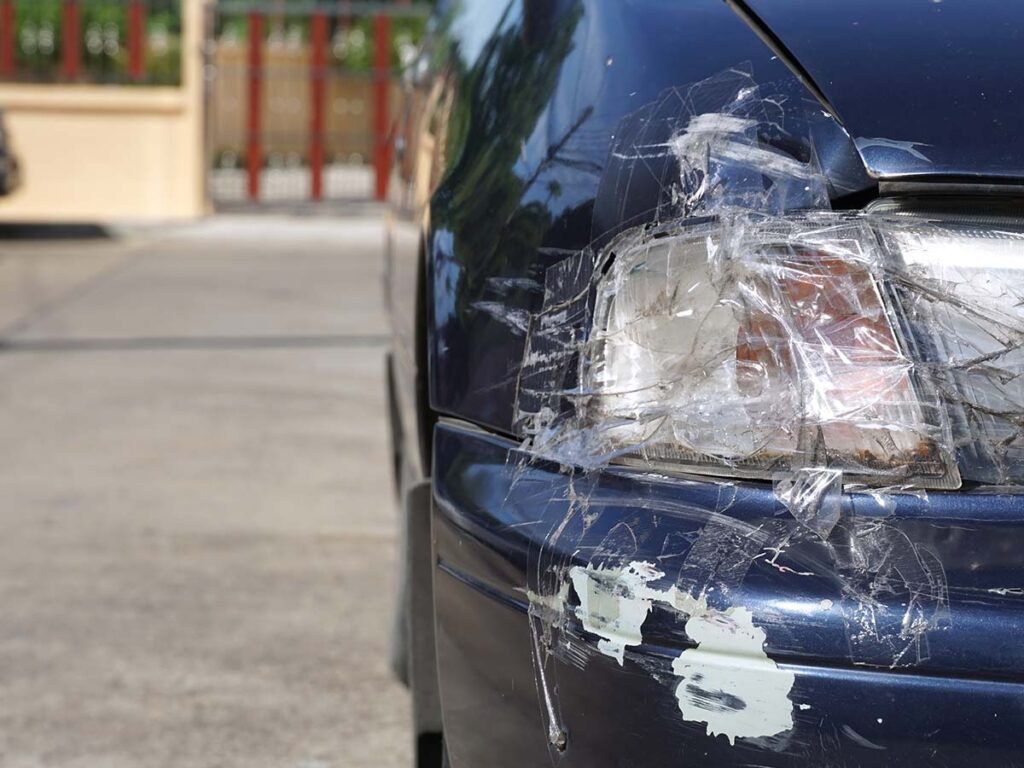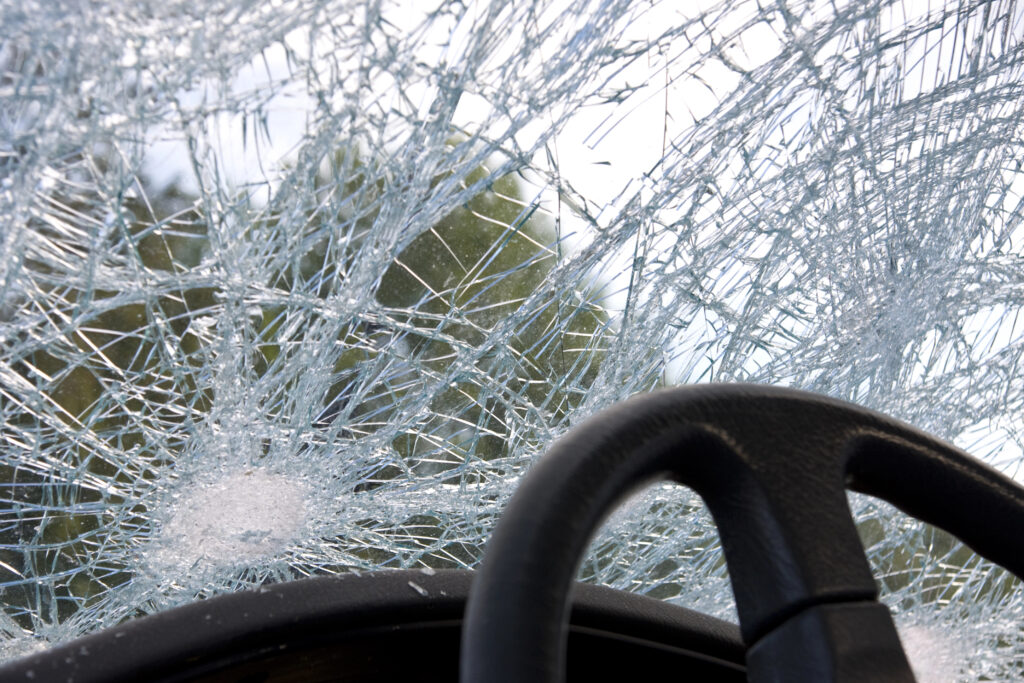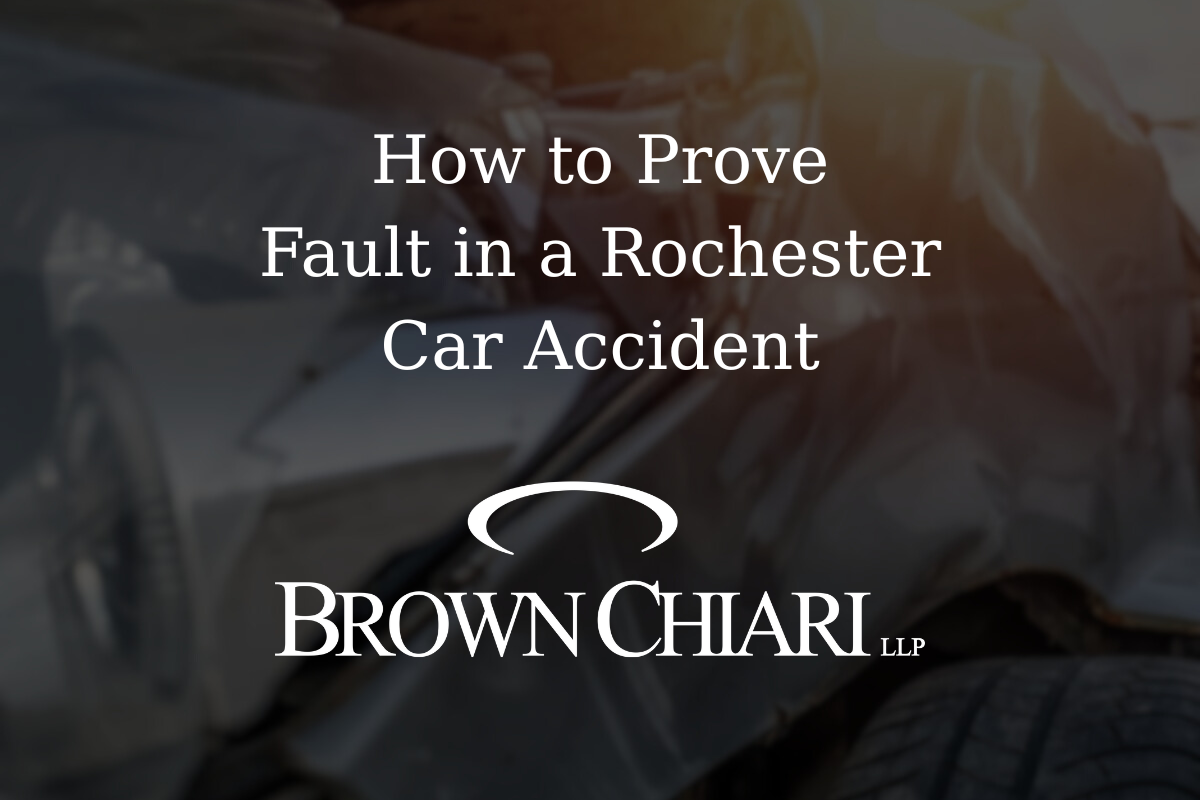Determining fault after a car accident is essential if you’re pursuing a personal injury claim or seeking compensation for damages. In Rochester, New York, proving fault can be particularly complex due to the state’s no-fault insurance system and comparative negligence laws. If you’ve been in a car crash, knowing how to collect the right evidence, understand traffic laws, and work with the right legal team can make all the difference.
At Brown Chiari LLP, our Rochester car accident lawyers help victims navigate the legal system, build strong claims, and recover compensation after serious collisions. Here’s what you need to know about proving fault in a Rochester car accident.

New York’s No-Fault System and How It Affects Your Case
Under New York law, drivers are required to carry personal injury protection (PIP) insurance, which covers medical expenses and lost wages regardless of who was at fault. However, if you suffer a serious injury that meets certain legal thresholds, you may be entitled to pursue a personal injury lawsuit against the at-fault driver.
To do so, you’ll need to prove that the other driver’s negligence directly caused your injuries and that your damages exceeded the no-fault limits. In these cases, determining fault becomes the centerpiece of your car accident case.
Key Steps to Proving Fault in a Car Accident
1. Gather a Police Report
After a car accident, always contact law enforcement. The resulting police report will document essential information such as:
- Time and location of the accident
- Road and weather conditions
- Statements from drivers and witnesses
- Observations about traffic violations or driver behavior
- A preliminary assessment of who was at fault
Police reports are critical pieces of evidence in both insurance claims and legal proceedings.
2. Collect Witness Statements
Eyewitnesses can provide objective accounts of how the accident happened. This is especially helpful in cases where the other driver denies responsibility. Your legal team can assist in gathering witness statements to support your version of events.
3. Preserve Physical Evidence
Photos of the accident scene, skid marks, vehicle damage, traffic signals, and road conditions help establish what occurred. If you’re able, take pictures or videos at the scene before vehicles are moved. This kind of physical evidence can strengthen your case significantly.
4. Review Medical Records and Bills
Medical records help tie your injuries directly to the accident. A medically determined injury—such as a broken bone or serious back injury—can meet the threshold required to pursue a personal injury lawsuit in New York. Keep records of all treatments, diagnoses, and medical expenses related to the crash.
Common Scenarios Where Fault Must Be Proved
- Rear end collisions: The rear driver is often presumed to be at fault, but there are exceptions.
- Red light and traffic violations: If a driver fails to obey traffic signals or causes a crash due to a traffic violation, this may help establish fault.
- Left-hand turns and oncoming vehicles: A turning driver who fails to yield may be liable for causing a collision.
- Intersection accidents: These often involve disputed accounts. Eyewitnesses, traffic laws, and accident reconstruction may be used to prove negligence.
Understanding Comparative Negligence in Rochester Car Accidents
New York follows a comparative negligence system, which means more than one party can share blame. If you’re partially at fault, your compensation will be reduced in proportion to your level of fault. For example, if you’re found 20% at fault, your damages will be reduced by 20%.
Because of this, insurance companies may try to assign you a higher percentage of blame to minimize payouts. Working with a knowledgeable car accident attorney is crucial to counter these strategies and pursue fair compensation.
Why Legal Representation Matters
An experienced legal team can handle the investigation process, gather evidence, communicate with insurance companies, and manage settlement negotiations. This allows you to focus on recovery while your attorney focuses on building a compelling case.
At Brown Chiari LLP, our Rochester car accident lawyers know how to establish fault, deal with insurance adjusters, and advocate for maximum compensation. Whether you’re facing high medical bills, lost wages, or long-term consequences, we’re here to help you through every step of your personal injury case.

Damages You May Be Entitled to Recover
If the other driver is found at fault, you may be entitled to recover compensation for:
- Medical expenses
- Lost wages and reduced earning capacity
- Pain and suffering
- Property damage to your vehicle
- Out-of-pocket costs tied to your recovery
Your compensation will depend on the severity of your injuries, the cost of your care, and your ability to prove the other driver was responsible.
Learn more about how to prove fault in a Rochester car accident. Call Brown Chiari LLP at (716) 681-7190 to schedule your free, no-obligation consultation. You can also reach us anytime through our contact page. Let us help you take the first step toward justice and recovery.
FAQs: Proving Fault in a Rochester Car Accident
How do I establish fault after a car accident in Rochester?
Start by obtaining the police report, collecting witness statements, documenting the accident scene, and seeking medical care. An attorney can help build your case.
Can I file a lawsuit if I was partially at fault?
Yes. Under New York’s comparative negligence laws, you can still recover compensation even if you were partly responsible, though your award may be reduced.
What if the other driver denies fault?
A car accident attorney can help gather physical evidence, analyze traffic laws, and consult experts to prove fault and challenge the other driver’s version of events.
Is a police report enough to prove fault?
A police report is helpful but not always conclusive. Additional evidence such as medical records, photos, and eyewitness testimony may be necessary.
How soon should I contact a car accident attorney?
As soon as possible. Early legal representation helps preserve evidence, guide the investigation process, and protect your rights during insurance claims.
